If you are visiting India or travelling across India, you are bound to come across some form of festivities all around the year. Festivals of India – this itself is such a broad term. The diversity of India is so much varied. From people to culture, religion and food, India seems to have a profound diversity. And that results in a celebration of a number of festivals in India. Majority of the Indian festivals are local and falls on auspicious days according to religious calendars. There are also a few Indian Festivals that are celebrated throughout the country. Whatever be it, festivals in India are not only confined among families but also celebrated with the entire community.
I have grown in a Bengali household in Kolkata. My grandmother used to say that for Bengalis it is “Baro mashe tero parbon”. It literally means that we Bengalis have at least 13 festivals in 12 months of the year. As children of the house, my cousins and I actually used to see some celebration or ritual taking place every month. Most of these festivals were perhaps only for the Bengali households. There were Ranna Pujo (it is the cooking festival!), Itu Puja, Poush Sankranti and so many more apart from the more famous Durga Puja, Kali Puja etc.
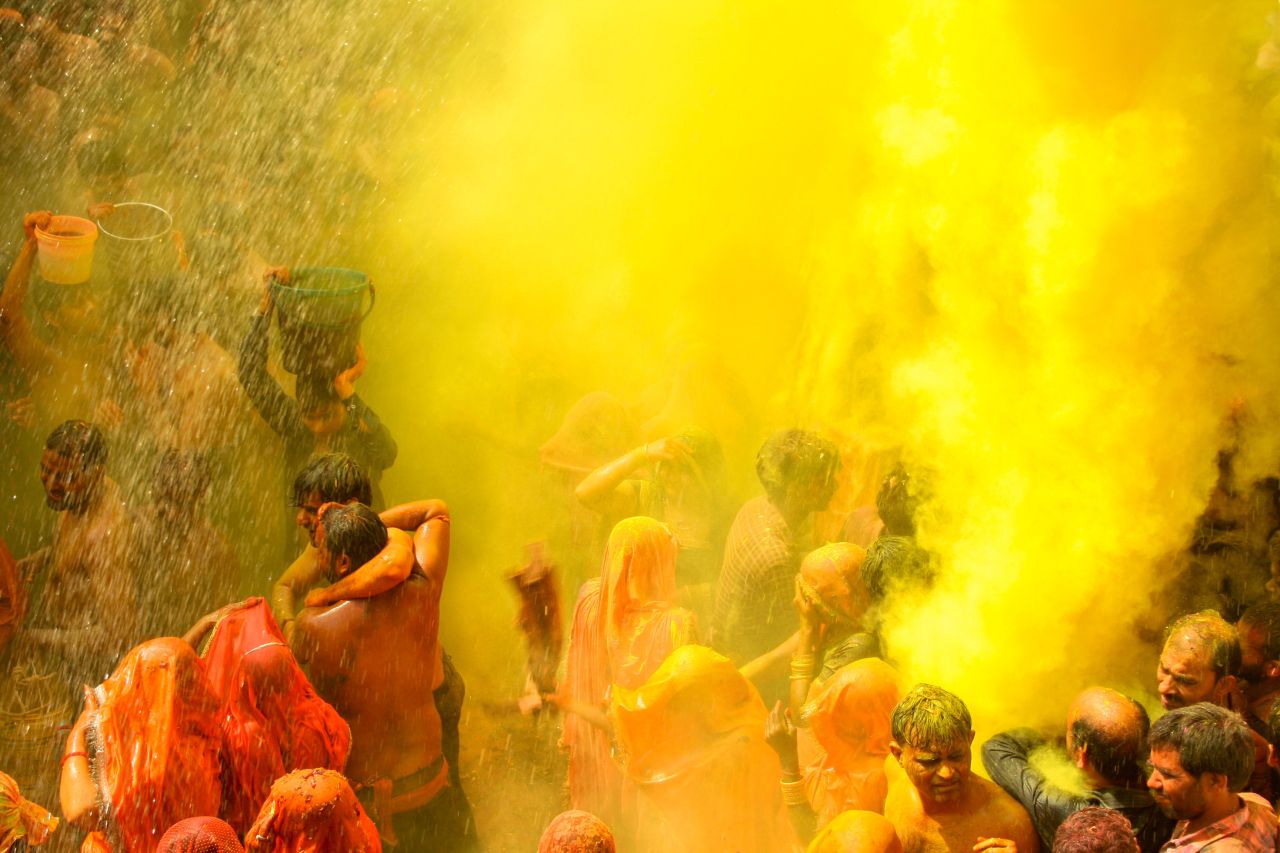
If this happens only in Bengal, just imagine there could be so many in entire India. If I ever had to compile them, it would take me years. So I would just mention a few of the Indian festivals here, some are quite famous and well known and a few lesser-known ones. Indian festivals are quite colourful and are a great way to understand the local culture and people of the country. If you are a photographer or cultural enthusiasts like me, I assure you that you would have a wonderful and fascinating time as you experience the festivals of India.

Contents
Famous Religious Festivals of India
With so many Indian festivals celebrated across the country, you can be a part of a festival if you are in India at any time of the year. And the best part is, in India you do not need an invitation to be a part of the festival. If you are there at that time, you will be welcomed with open arms to be a part of the celebration.
1. Holi
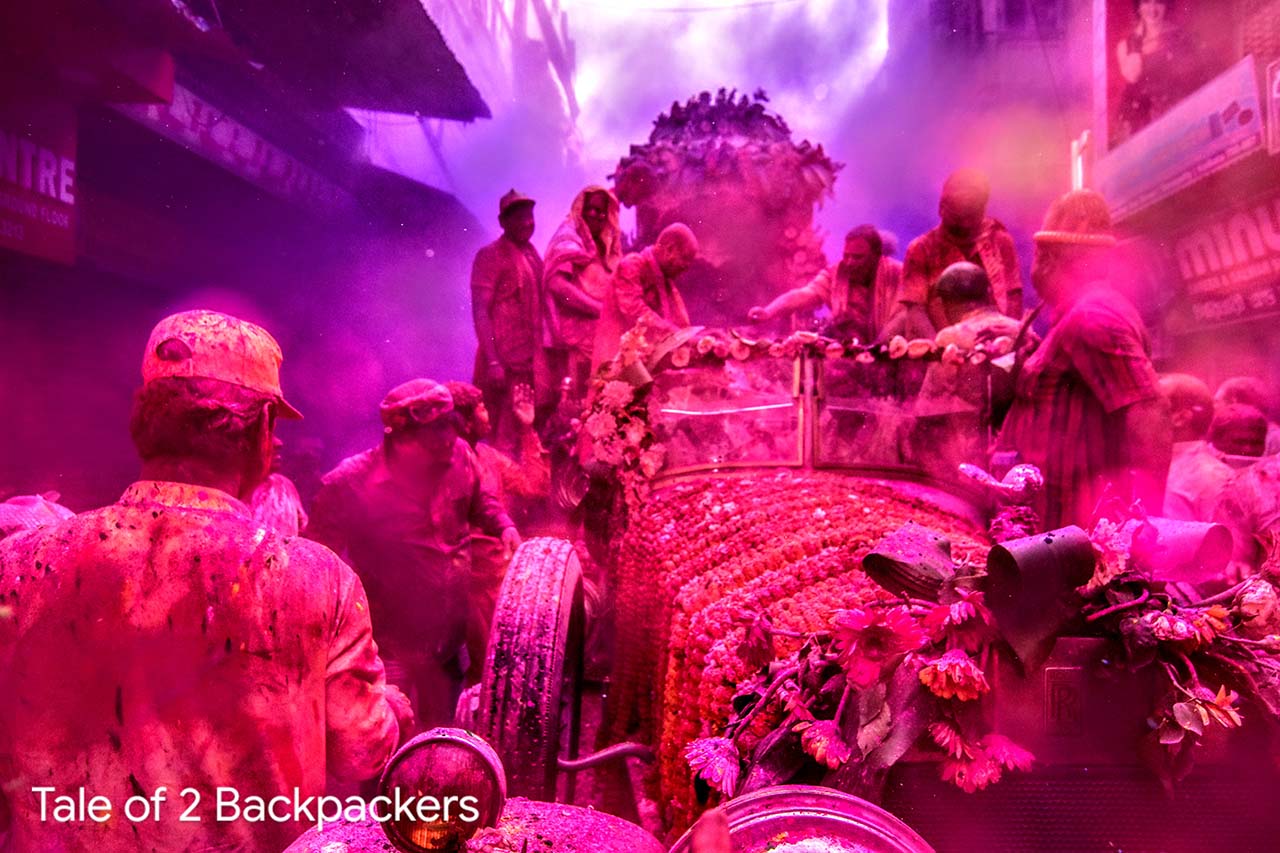
Holi is perhaps one of the most vibrant and fun festivals of India. Also known as the festival of colours, Holi also depicts the win of good over evil. Holi is one of the major festivals of Northern India celebrated in spring. The festival is as vibrant and sprightly as spring itself. In this festival, people throw colors on each other and play with colors. Celebration of Holi is linked with the eternal love of Radha and Krishna from Indian mythology. To experience Holi in a grand manner, you must celebrate Holi in Vrindavan, Mathura and Barsana. Apart from these places, Holi is celebrated in a grand manner at Delhi, Varanasi, Pushkar as well.
However, if you want to experience a different version of Holi, you can also visit the Basanta Utsav at Shantiniketan.
When: March
Where: Everywhere in India
2. Durga Puja

Durga Puja is the most famous festival of the Bengalis where Goddess Durga is worshipped as the supreme energy of the Universe. According to Hindu mythology, Goddess Durga fought with demon Mahisasur for nine days and killed him on the tenth day.
While Durga Puja is celebrated in West Bengal and by the Bengalis, it is Navratri in other parts of India. Here I would mention about Durga puja only. For Bengalis, Durga Puja is not just a festival, it is a carnival. It is a time for homecoming. Infact, Goddess Durga is treated as a daughter and during the four days of festivities, it is believed that the Goddess has visited her parent’s house. Likewise, families come together during the Durga Puja for celebration.
In Kolkata, Durga Puja is just like a huge carnival. People are outside their house all through the day and night meeting friends and family. There are no restrictions and only enjoyment. Durga Puja Pandals are quite famous in Kolkata and so are the celebrations of the Bonedi Barir Durga Puja (Durga Puja celebration at the aristocratic houses). It is said that you should visit Kolkata during the Durga Puja to understand what celebration is!
Nowadays Durga Puja is celebrated all around the world wherever there are Bengalis. Idol makers from Kumartuli send their Durga idols even to foreign lands!
Where: Kolkata
When: October
Recommended Read: Kolkata Travel Guide for the first timers
3. Diwali
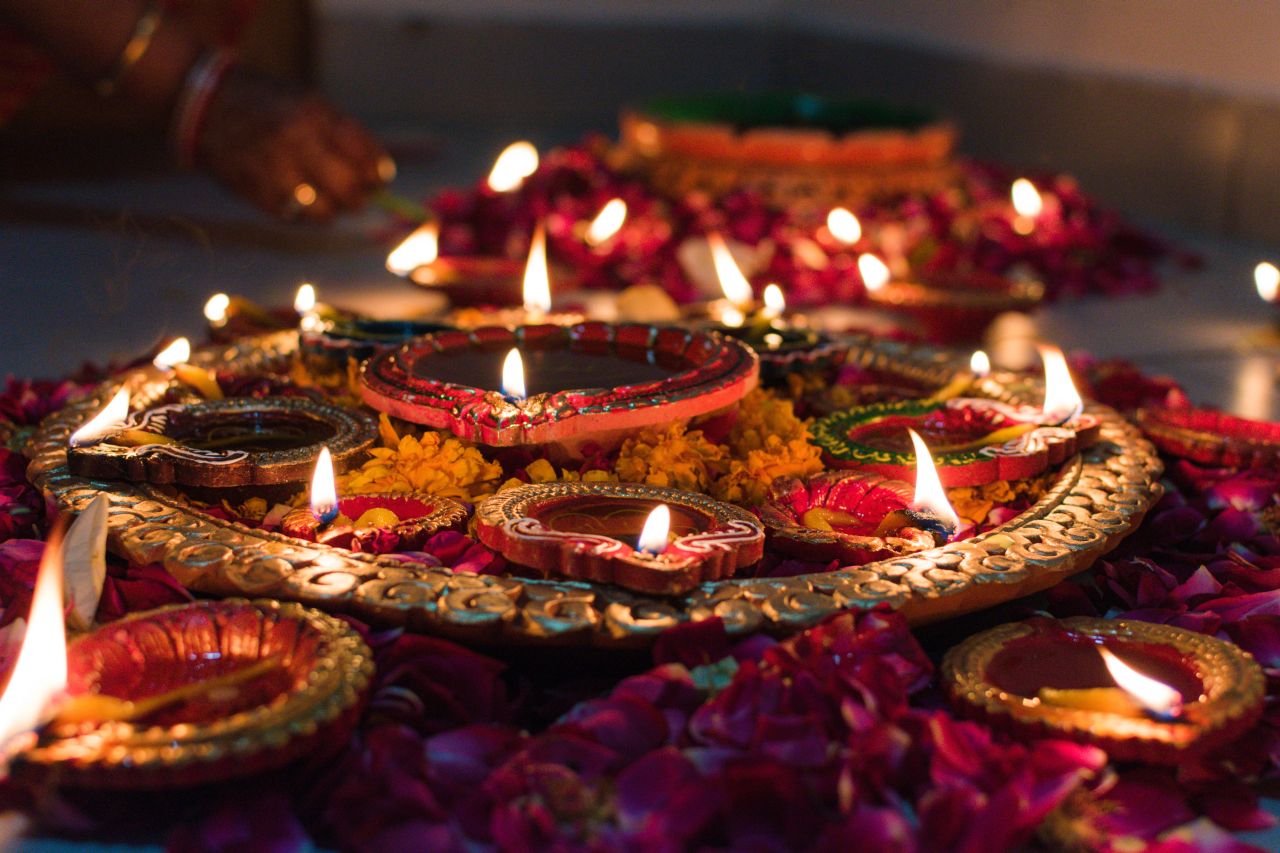
Diwali is undoubtedly one of the biggest festivals in India and is celebrated across the country with equal enthusiasm. Known as the ‘Festival of Lights’, Diwali is a time for celebration and indulgence. Diwali is also linked with Indian mythology. It is the time when Lord Rama returned home in Ayodhya with his wife Sita and brother Lakshman.
During Diwali, houses are lit with candles, Diyas and lights. Gifts are exchanged, houses are decorated and firecrackers are burst in the night. Diwali is celebrated all over India with lights and crackers and lots of fun.
Where: Everywhere in India
When: November
4. Ganesh Chaturthi

Another famous festival, Ganesh Chaturthi is celebrated to commemorate the birth of the Lords Ganesha, the elephant-headed God. It is a ten days festival celebrated with great pomp in western parts of India, especially Maharashtra and Goa.
Idols of Lord Ganesha are installed in homes as well as in mandaps and worshipped with devotion. Ganesha is also known as Vighnaharta meaning remover of obstacles. Lord Ganesh is known as the harbinger of new beginnings and good in life while removing all the evils. Nowadays, Ganesh Chaturthi is celebrated in almost all parts of India.
Where: Maharashtra and Goa
When: August
5. Eid-ul-Fitr

Eid-ul-Fitr is another major festival celebrated in India marking the culmination of the fasting month of Ramzan. Although Eid is an Islamic festival, in India the festival is a time for happiness and togetherness. People from other communities also join in the celebration. Best places to celebrate Eid are Lucknow, Agra, Hyderabad, Delhi and Mumbai.
Where: Everywhere in India
When: May
6. Christmas

Christmas is undoubtedly one of the most celebrated festivals in India. Significantly, Christmas is not confined to Christians only in India. It has become a celebration for all. The birth of Christ is celebrated with cakes, Christmas trees, cards and gifts in all parts of India. However, the real festivities of Christmas can be seen in states like Meghalaya, Mizoram and Goa.
Christmas is celebrated with a lot of fun among the Anglo Indian community in India. They celebrate Christmas for more than a week and all the festivities continue up to the New Year. Kolkata also has a thriving Anglo Indian community at Bow Barracks where Christmas is celebrated with wines, cakes and dances.
Where: Everywhere in India
When: December 25
7. Rath Yatra

Rath Yatra in Puri is the most awaited festival in Odisha dedicated to Lord Jagannath, his sister Subhadra and his brother Lord Balabhadra. The festival is also known as the Chariot Festival and falls usually in the month of July.
Puri Rath Yatra gets as many as 4-5 lakhs visitors every year including both Indian and foreign tourists. The idols of the Lord Jagannath, Devi Subhadra and Lord Balabhadra are carried inside three huge and beautifully decorated chariots. The chariots are then pulled through the streets of Puri. A huge procession of people walks along with the chariots. It is believed that if you get a glimpse of the idols in the chariot, then you will have a good year ahead. For this, the devotees try hard to get a single glimpse of their beloved god inside the Rath or chariot. The chariots are themselves about 14 m (45 feet) high having 16 wheels and are pulled by a large number of people.
Rath Yatra is celebrated in other parts of India as well, especially in many parts of West Bengal.
Where: Puri, Odisha
When: July
8. Chhat Puja
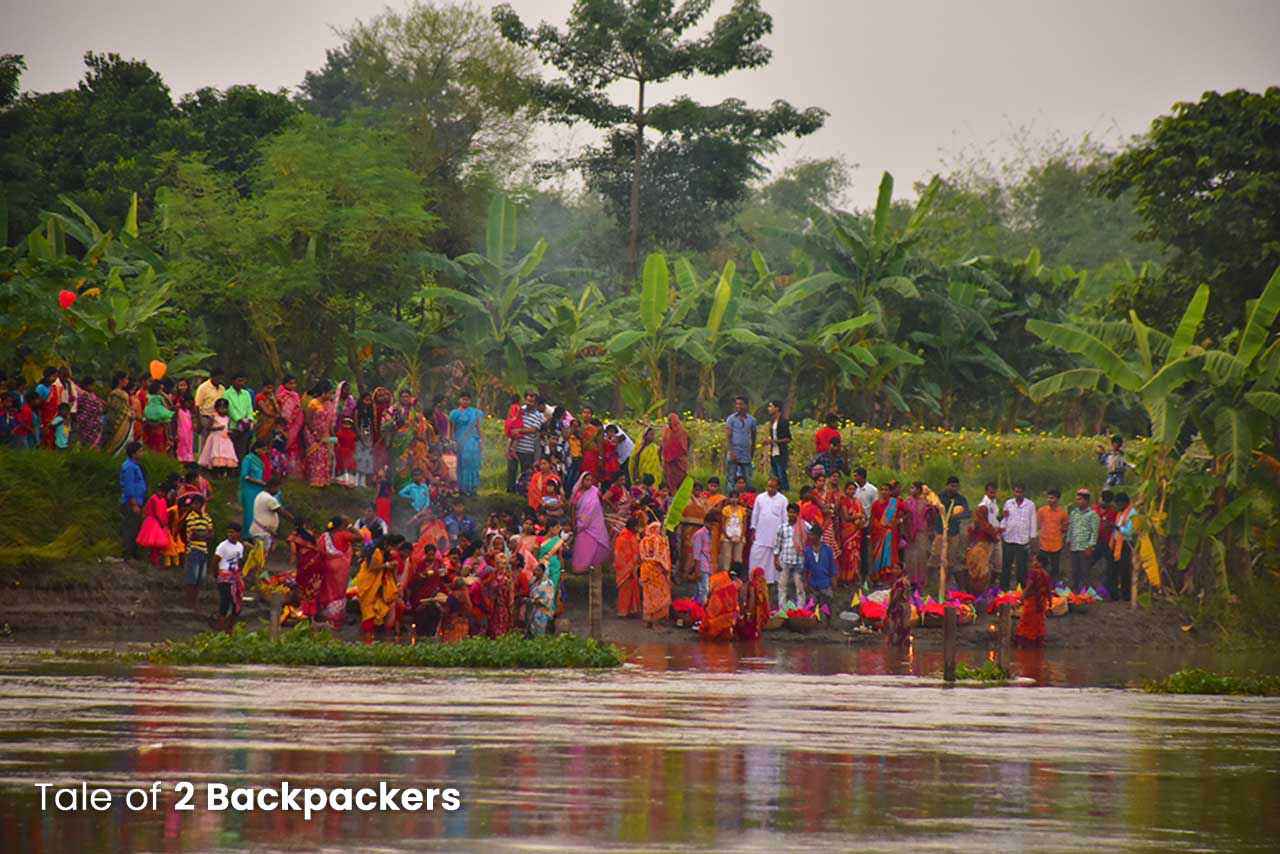
This is an ancient festival dedicated to Lord Surya or Sun God and Chhathi Maiya or Goddess Usha. Chhat Puja is celebrated six days after Diwali to express gratitude and appreciation to Sun God who is believed to be the supreme energy for sustaining life on earth. This 4 days festival is celebrated mainly in Bihar, Jharkhand and eastern Uttar Pradesh in a grand manner.
The Chhat Puja has its own set of rituals where the devotees have to take a bath in a river before sunrise and offer prayers to the Sun God and Goddess Usha (Chhatti Maiya). The devotees also have to undergo a day-long fast that is broken in the evening after offering prayers to Mother Earth. The one who takes the fast is known as Vratins. The festival ends when the vratins break their 36 hours fast after offering prayers to the Sun God.
Chhat Puja is a colorful affair when the devotees go to the river banks to offer their prayers. After Chhat Puja, a feast of Thekuas (a sweet made of wheat flour, sugar or jaggery, coconut along with ghee and dry fruits) is a must.
Where: Bihar, Jharkhand
When: November
9. Mahamastakabhisheka

I have included Mahamastakabhisheka because this happens only once in 12 years and we were lucky to get a glimpse of the event in 2018. This is one of the biggest festivals of the Jain community and the town of Shravanbelagola sees a huge gathering of devotees from many parts of India.
Shravanbelagola is the home to a 57 feet gigantic statue of Lord Bahubali, who is highly revered by the Jains. Mahamastakabhisheka is the head anointing ceremony of the statue and forms a part of the ancient Jain tradition. Mastaka means head and abhisheka means coronation or anointing. During the ceremony, the devotees bathe the statue with milk, coconut water, turmeric, sugarcane juice, saffron paste, vermilion and 52 varieties of flowers. Contents from 1008 pots are smeared on the head of the statue. The entire ceremony carries on for about 10 hours.
This was something that we were not prepared to see. The entire event was in such a huge scale. We were returning from our Hampi trip when we heard about the ceremony. Well, it was something that we would always remember.
Where: Shravanbelagola
When: Once in every 12 years usually in February. The last one occurred in 2018.
Major Harvest Festivals of India
10. Bihu

Bihu, the Assamese cultural and harvesting festival has a special place in my heart. I had first seen a Bihu dance performance during my school days and I totally fell in love with the red and white Mekhla-Chador and the soulful Assamese songs.
For the Assamese, Bihu is a feeling that teaches them to celebrate both happiness and sadness. There are three Bihus celebrated in Assamese community – Rongali or Bohag Bihu, Kongali or Kati Bihu and Bhogali or Magh Bihu.
Rongali Bihu is celebrated on the occasion of Assamese New Year and it also signifies the start of the harvesting season in Assam. Bihu dance forms a significant part of the Bihu celebrations. Kati Bihu falls on the month of October. In this, rituals are observed to ward off the evil from the crops and community at large. Bhogali Bihu or Magh Bihu is the festival of feasts. This is celebrated in the Assamese month of Magh that usually falls on January. This marks the harvesting of crops after which the farmers get a period of rest before the next harvesting season.
Though the traditional practices of Bihu are disappearing like most of the traditional festivals of India, there are efforts to revive these festivals in the form of community celebrations and Bihu dance performances.
Where: Assam
When: Rongali Bihu – April, Bhogali Bihu – January and Kati Bihu – October
11. Onam

Onam is the biggest and most popular festival of Kerala marking the homecoming of the legendary king Bahubali. The festival usually falls in the month of August – September and is celebrated for 10 days with great enthusiasm in Kerala. The festival also coincides with the harvest season falling on the months of August and September. Each day of Onam has a special significance and different rituals are done on each day.
Onam is characterized by various rituals and celebrations like Onasadya, Pookalam, Vallamkali Boat Race and many others. The best of dances of Kerala can be witnessed during this time like the Pulikali (Tiger dance), Kummati Kali, Kathakali and more. Onam celebrates the unity of faith religion and the people of Kerala through their culture, song, dances and cuisine. The famous boat race of Kerala can also be seen during this time.
Where: Kerala
When: August – September
12. Lohri

Lohri is one of the popular festivals of North India, especially Punjab. While the dates of the majority of the Indian festivals are variable, Lohri happens to have a fixed date on January 13, the day before Makar Sankranti. This time marks the movement of the sun towards the northern hemisphere, what is known as Uttarayan in India. Thus Lohri marks the end of the winter solstice and the beginning of longer days.
Lohri marks the beginning of the harvest season in Punjab and also the end of winter. It is celebrated by making a huge bonfire and singing folk songs. People sing and dance around the Lohri fire and throw foods like puffed rice, corn and others as a tribute to the gods. Visit Punjab during the time of Lohri is a great opportunity to know the local customs of the Punjabis.
Where: Punjab
When: January 13
13. Wangala Festival
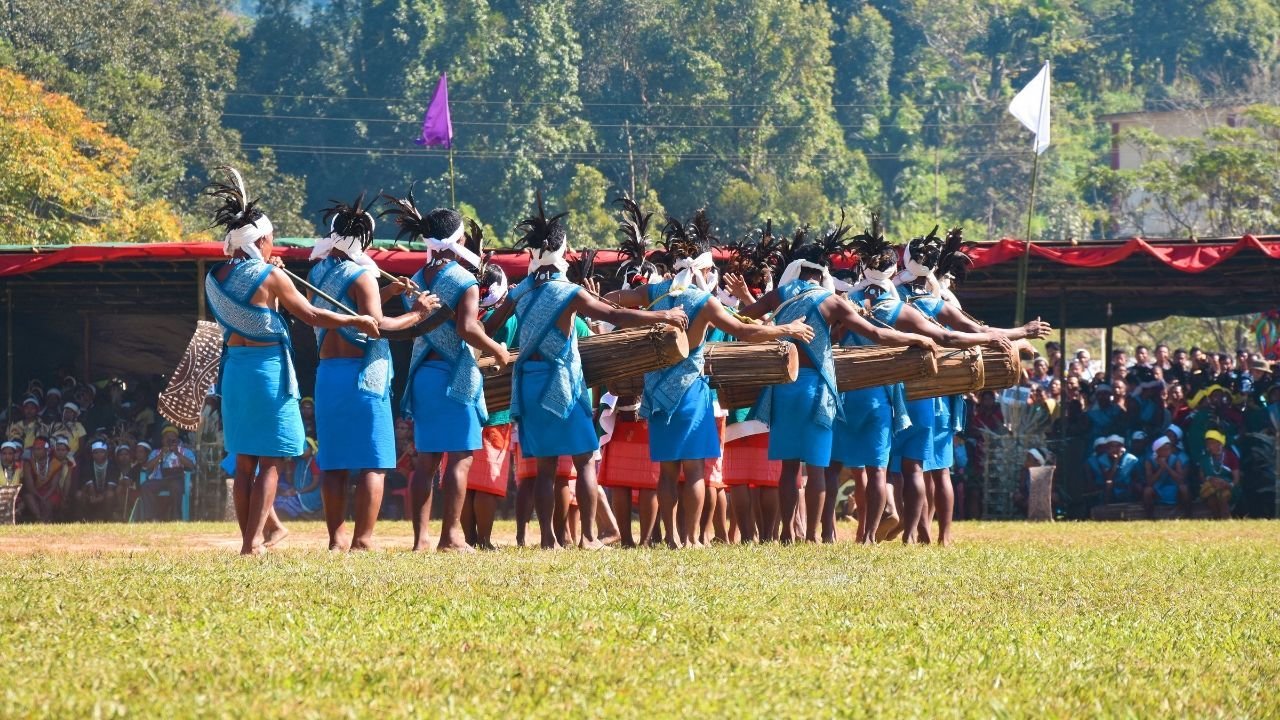
Wangala Festival is the most important harvest festival for the Garo tribe mainly found in Meghalaya. Agriculture is the main source of livelihood in these areas and majority of the festivals are celebrated surrounding the harvest season. Wangala is a post-harvest thanksgiving festival that is celebrated annually not only in the Garo villages of Meghalaya but also in places where the Garos have migrated.
Wangala Festival is the celebration of the culture of the Garo tribe. Once upon a time, it was their identity, but with time and modernity, the traditional festival was gradually on the wane. This is when a few Garo intellectuals decided to organize the festival every year at a particular time. The festival is celebrated through 3 to 4 days when various traditional rituals are performed by the tribes. The festival culminates with a grand dance where 300 people perform their traditional dance while 100 people play the indigenous drums. I was totally floored to see such a performance.
I happened to be at the right place in Tura at the right time during November. Once I was there, my host took it on herself to take me to the festival and look after the fact that I enjoyed my time there. Didn’t I tell you that you do not need an invitation to attend an Indian Festival?
Where: Tura, Meghalaya
When: November
14. Losoong and Kagyed Dance

Losoong is the New Year celebration of the Bhutias in Sikkim. This Buddhist festival marks the end of the harvesting season and is celebrated across a majority of the monasteries in Sikkim. Unlike Wangala Festival, we had researched and planned our trip to North Sikkim to attend the Losoong and Kagyed dance that is held before the New Year day, Losoong. Kagyed Dance is performed by the monks in the monasteries and symbolizes the destruction of the evil forces before the advent of the New Year. Here also, the Chaam masked dance is held and also the tantric Black Hat Dance that commemorates the Buddhist’s triumph over the evil forces.
After the end of the Kagyed Dance, a huge demonic idol that symbolizes the evil is burnt. This is something like what happens during the Dussehra. After the dance, the monks recite prayers and Losoong is celebrated the next day. Losoong is the New Year and is the time for new beginnings, meeting and greeting families and friends.
Where: Sikkim
When: December
Unconventional Festivals of India
- Hornbill Festival
- International Kite Festival, Ahmedabad
- Rann Utsav
- Pushkar Camel Fair
- Pang Lhabsol
- Hemis Festival
15. Hornbill Festival
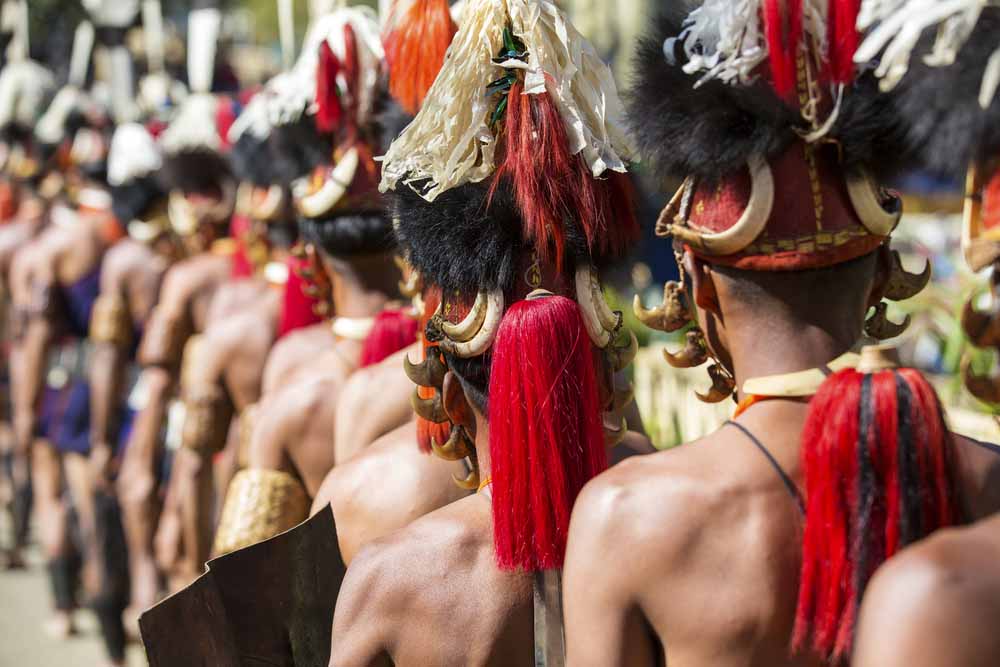
Hornbill Festival is a 10 days extravaganza celebrated in the Kisama Heritage village near Kohima. This is neither a religious festival nor a harvest festival. Hornbill Festival is organized by the Government of Nagaland, initially started in the year 2000 to save the hornbills from being hunted. Gradually the festival has become a grand celebration of the tribes, tradition, handicrafts, culture and cuisines of the Naga people. There is an exhibition of Naga arts and handicrafts. Various cultural activities, indigenous games, fashion shows, traditional songs and dances are performed all through the day.
Apart from these cultural activities, another major attraction of the Hornbill Festival is the Hornbill National Rock concert that occurs in the evening. Various bands across the country come to perform here.
Hornbill Festival is truly an extravaganza with all the tribes of Nagaland coming together and showcasing their special songs and dances, handicrafts, dresses and food.
Where: Kisama Heritage Village, Kohima, Nagaland
When: December 1-10
16. International Kite Festival, Ahmedabad

International Kite Festival in Ahmedabad is one of its kinds when you can see the skies full of kites from the morning till dusk. The festival marks the beginning of Uttarayan or Makar Sankranti. It is the end of the winter solstice when the sun starts its movement towards the Northern Hemisphere. Makar Sankranti is celebrated across India in various ways and in Gujarat it is celebrated in the form of Kite Festival. The days are warm and sunny with light breeze flowing totally conducive for the kites to stay afloat in the skies.
Kites of all shapes and sizes are flown in the sky and there is a friendly competition among neighbours to bring down each other’s kites by cutting the kite string. Nowadays, kiters from other countries visit Ahmedabad.
Where: Ahmedabad and other parts of Gujarat
When: Makar Sankranti, January 14
17. Rann Utsav

If you thought 10 days were too much of a celebration, then welcome to the Rann Utsav. It is a three-month-long festival held at the Great Rann of Kutch, one of the largest salt deserts in the world. Held in winter, the entire salt marsh looks white and surreal. Tents, both air-conditioned and non-airconditioned are set up at the Great Rann for accommodation.
Every evening traditional songs, dances and cultural programs are organized. Stalls are set up selling handicrafts and other items. In these three months, Rann is totally decked up and becomes the home of an extravagance celebration. Full moon nights are the best time to visit the Rann Utsav. The salt deserts of the Great Rann of Kutch look ethereally beautiful and silver-white in the moonlight.
Where: Great Rann of Kutch, Gujarat. Located near Bhuj
When: November to February
18. Pushkar Camel Fair

Pushkar Camel Fair is a mega annual event in Rajasthan and traditionally the Pushkar Mela is all about the buying and selling of livestock especially camels that take s place for a few weeks. However since the last couple of decades, Pushkar Fair has become more of a festival and a major attraction for both Indian and foreign tourists. It has become a showcase for the vibrant and colourful culture of Rajasthan.
True to its traditions, the villagers come to Pushkar with their camels and livestock for trading. They pitch their tents in the grounds near the fairground. They stay there in a makeshift arrangement for 7-10 days for doing business. It is believed that at least 50000 camels are brought in to Pushkar every year for trading.
While trading and business go on, as usual, the fair also goes on with equal zeal. There are several events taking place as well as competitions. Games, traditional songs and dances are played. There are giant Ferris wheel and merry-go-round in the fairground. Various Rajasthani handicrafts are also sold. Rajasthani cuisine is also a major attraction of the Pushkar Fair. Camel milk tea is actually quite famous in the Pushkar Fair. This fair or festival, whatever you prefer to call it is indeed a spectacle.
Where: Pushkar, Rajasthan
When: November
19. Pang Lhabsol
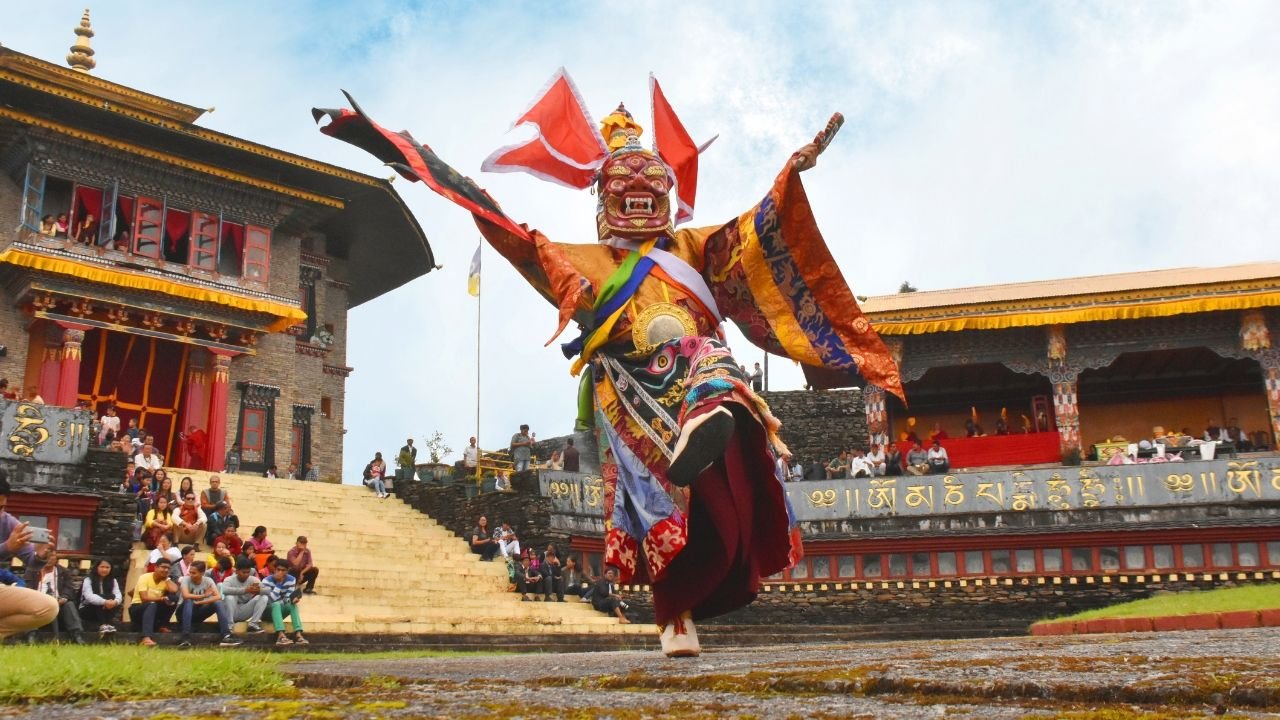
Pang Lhabsol is another festival that completely filled us with amazement. I had earlier seen masked dance at Gomira in Dinajpur, but this one was quite out of the world experience. A Buddhist festival, Pang Lhabsol is one of the major Sikkimese festivals usually celebrated in the month of August or September. The festival pays homage to all the guardian deities and protectors of Sikkim including Mt. Kanchenjunga.
Pang Lhabsol is celebrated across a number of monasteries in Sikkim and takes place for 3 days. The monks recite prayers for 3 days and on the final day, the festival is concluded by the Chaam dance. At the Chaam Dance, the monks perform masked dance and warrior dance that signifies their devotion to the Chogyals (Kings) of Sikkim and the guardian deities.
We witnessed the Pang Lhabsol Festival at Rabong Monastery at Ravangla. It was a grand affair at the small town of Ravangla. The best part of the entire festival was the colorful Pangtoed Chaam.
Where: Sikkim
When: August
20. Hemis Festival

Hemis Festival is celebrated on the 5th month of the Tibetan calendar in the Hemis Monastery, a 300-year old monastery located in Ladakh. This 2 days festival marks the birth anniversary of Guru Padmasambhava, one of the greatest figures of Buddhism. The festival is celebrated in the huge courtyard of the Hemis Monastery and is attended by a large number of people. The main attraction of the festival is the masked Chaam dance. Vibrant costumes are worn by the Buddhist lamas along with colorful masks while performing the Chaam. The Chaam dance denotes the victory of the good over the evil forces.
Just like the Pangtoed Chaam and the Kagyed Dance, the Hemis Chaam is also an elaborate affair and is the major attraction of the Hemis Festival.
Where: Hemis Monastery, Ladakh
When: June or July
A picture from Basar Confluence, Basar, Arunachal Pradesh

The list of festivals in India is neither comprehensive nor exhaustive. As I mentioned earlier, India celebrates each festival with much joy and merriment. Festivals are community affair to meet people and celebrate life. Of late, India has become famous for several music festivals and literary festivals as well. The Indian festivals mentioned here are only a few of the ones that you must try to attend once whether you are an Indian or a foreign traveller visiting India. I hope to keep on adding more to the list as I explore more and more festivals across India.

Spread the word. Share it with others.

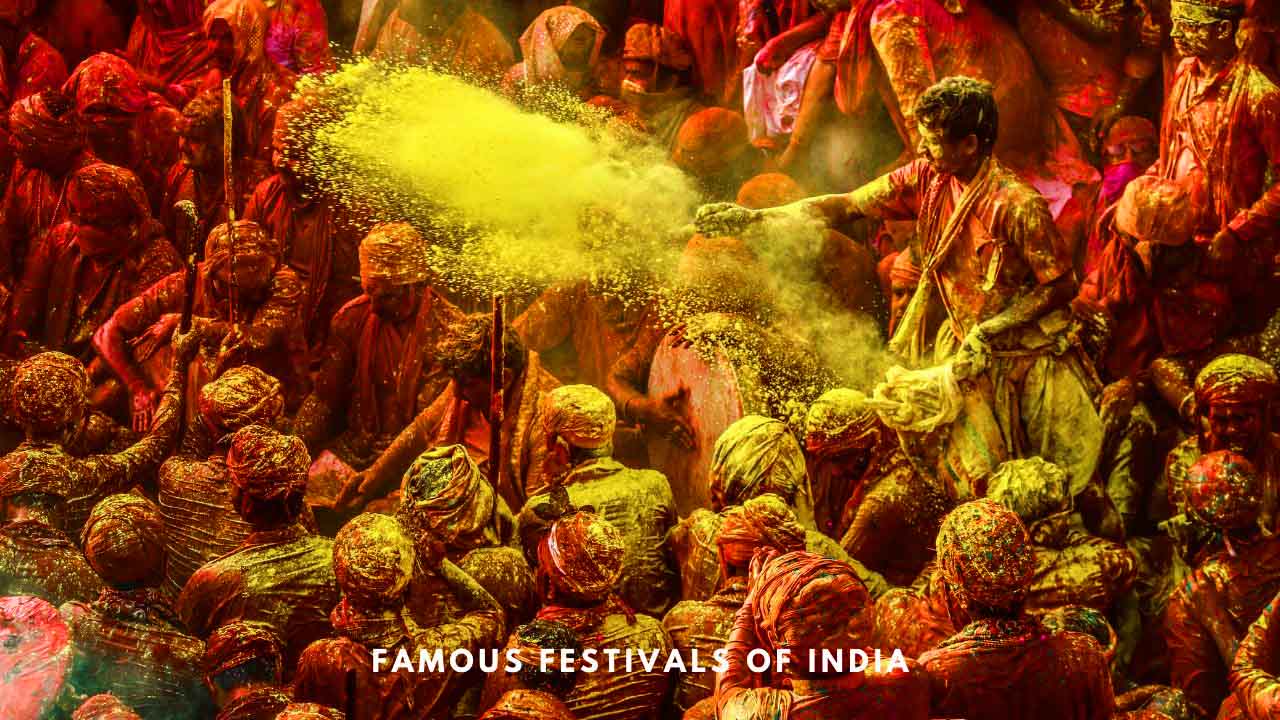
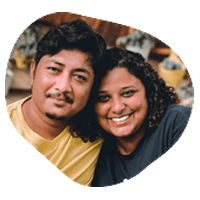




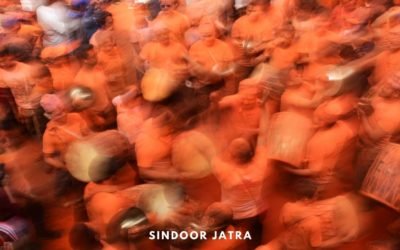
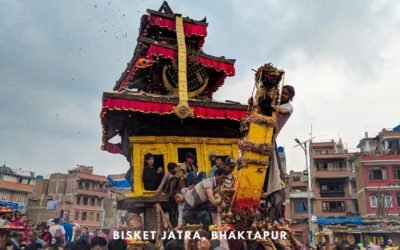
Cheerful!
I absolutely loved this post! Have got the opportunity to attend few of them but some are exactly new for me. I want to enjoy each one of them after covid. Thanks for compiling list. loved your pics too. Keep me updated with your next blog.
Thank you so much! Sure we will. Stay in touch.
That is a wonderfully list of festivals of India. Truly, if we start compiling the list of whole festivals of india, it probably will take an year or so. We have attended and celebrate few of these festivals but some are absolutely new to us. Will love to see rest too.
Thank you Suruchi!
Since I started practicing yoga, my dream has been to go to India. Unfortunately, this is not possible now, but I am glad that I could at least look at your beautiful photos and read about this amazing country. In the era of coronavirus, these crowds look quite surreal. Currently, I can’t imagine attending such gatherings but I hope that someday everything will return to normal and we will be able to have fun at festivals again.
Thank You!
Thank You! Ewa
Thank you for this very comprehesive list. I only knew of Holi and Diwali, so it was very interesting to read about all the other festivals. I would love to experience a festival like this in India someday. The smaller harvest festivals and Durga Puja sound especially fun.
Thank you Sophie! Durga Puja is grand in Kolkata. If you ever come for Durga Puja, let me know. 🙂
Oh my goodness! I had no idea there were so many! I have heard of Diwali and just heard about Holi this year (love the colors there!), but I didn’t realize that there are so many other times of the year to go. So fun! I’d love to build a trip around one of these festivals, and I am glad that I have other times of the year to consider.
Thanks Jennifer! These are only a few festivals in India.
I too being from India, going through theses festivals gave me such a great feel of the rich customs that we have inherited. Having got the opportunity to travel all across the country on work and pleasure, have experienced most of these festivals. Mahamastakabhisheka though is new for me which I did not know about. Wangala is again a festival I would love to experience,
The more we travel the more we know. Wangala was something that happened by chance. Thank you Subhashish for the comment.
It would not be wrong if I say that India is land of festivals. I am fond of festivals anywhere. If you ask my favorite ones , it would be Bihu, Diwali, and Holi. You have listed quite a few of them. I am yet to attend a lot of them in India. Great read.
Thank you, Parnashree!
Festivals are a great way to enjoy the culture of a place. I have been lucky to have seen a few of these myself – like the Chhat puja and Durga Puja. Diwali of course, we celebrate it ourselves and I don’t count holi as I want to get to Mathura to see the actual flavor of it. I do want to get to Northeast to see their unique festivals – starting with the hornbill one. Fingers crossed that I can get to it.
Truly said, Ami. For my part, I would want to see Onam and a Ganesh Chaturthi procession in Mumbai. I am sure that would be a spectacle.
I absolutely loved this post! It makes me miss India so so much. I didn’t get to see any festivals during my time there, but I’m hoping I will get to go back at least once in my lifetime. It is my bucket-list dream to go to India for Holi! I’d love to see the Ganesha festival and Diwali as well. Even Christmas in Bow Barracks sounds really fun! I love how colorful and festive the crowds are!
Thank you Stephanie! Next time you are here, do visit during the time of Durga Puja. I would be happy to take you around.
This is awesome! I love the info graphic you created to show all the many different festivals and when they’re happening! I’ve never been to a festival while visiting India, however, I was fortunate enough to celebrate Depavali(Diwali) in Singapore when I was there. It was incredible! It made me want to visit India again and during a festival. I can only imagine how amazing it must be. I also want to check out the kite festival, that just looks cool!
Thank you Joe! The Kite Festival is just amazing. You must visit India at that time.
I love the idea of visiting a place when a festival is on. That adds so many entertainment options. Although the idea of huge crowds is less appealing. The colour of Holi has always attracted me. Diwali with its lights and firecrackers must be a great festival to see. The various harvest festivals sound great. And many happen when the weather has cooled just a little. Always good to give thanks for a bountiful harvest with song and dance. But the kite festival might be my favourite for all the colour and creativity.
Thanks Linda! Yes the Kite Festival is visually quite stunning. Hope you come to visit India during that time.
I once visited Morocco during their Eid and it is true that it is so different than what you describe here (or, at least, this is what Moroccans were able to explain to me in English). What I noticed is that they ate a lot of sheep meat and made barbecues even in the street. I don’t know if this happens in India too, but I think it would be a thrilling experience to see different facets of the same festival in different cultures and countries.
That’s true. The same festival can be celebrated in different ways. Here in India also, Navratri is celebrated in different ways across the country. Thanks for the comment.